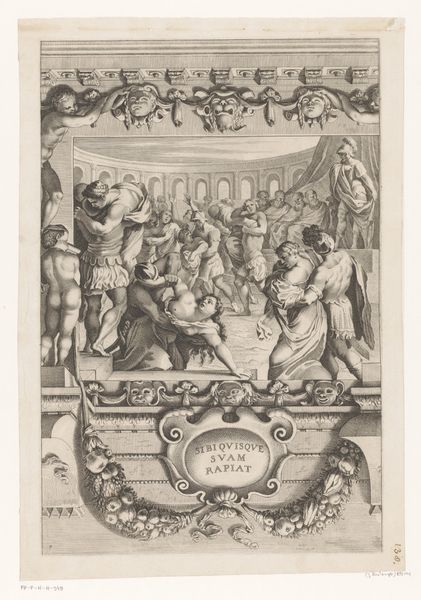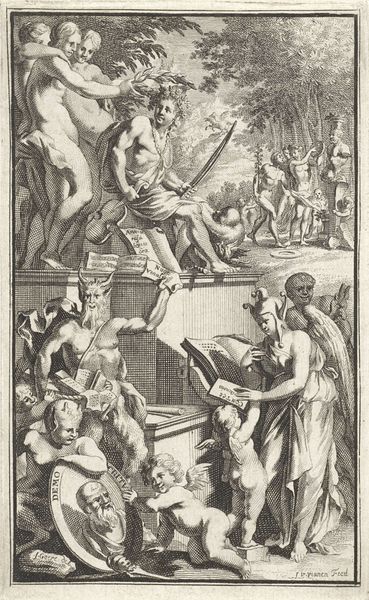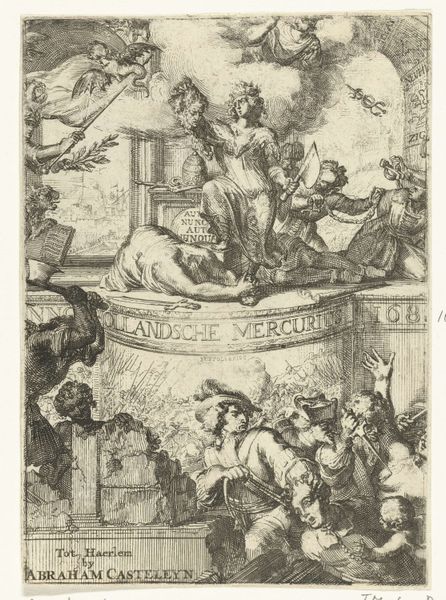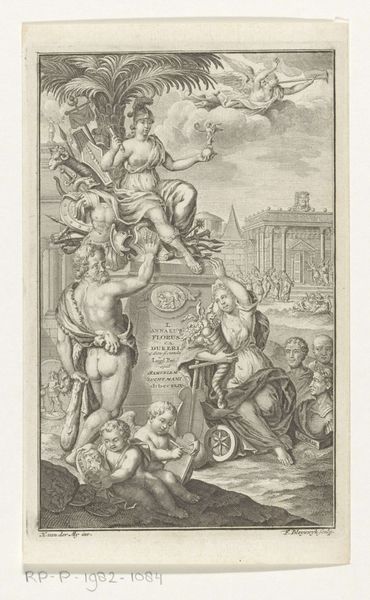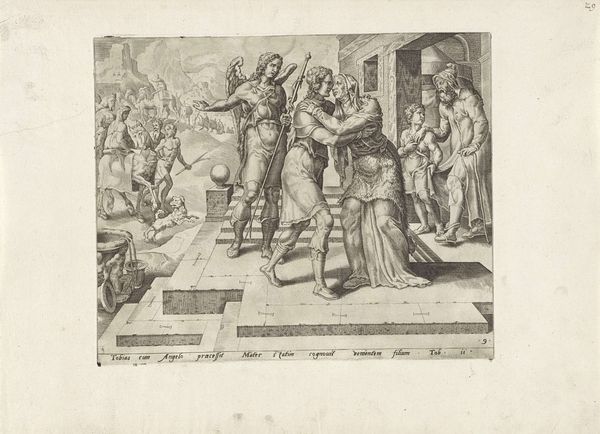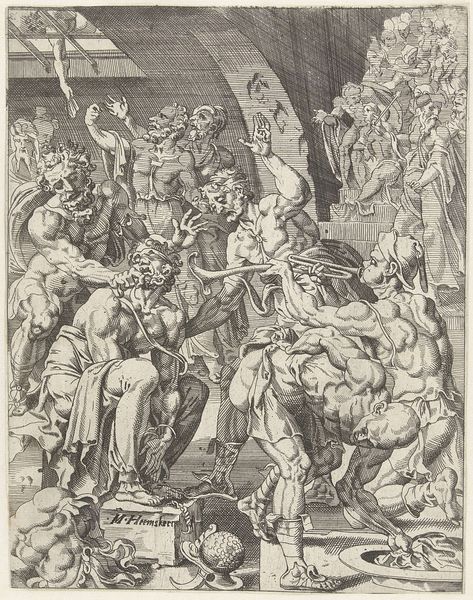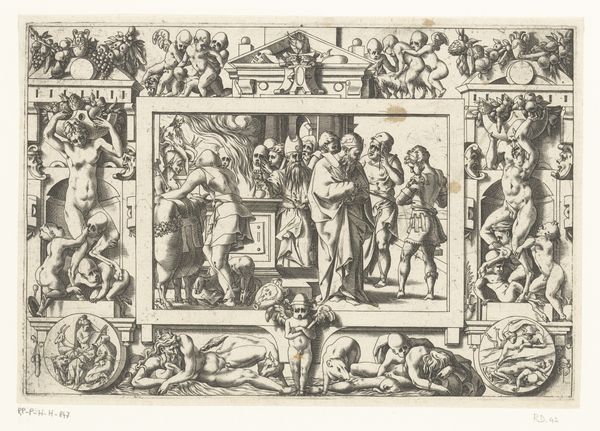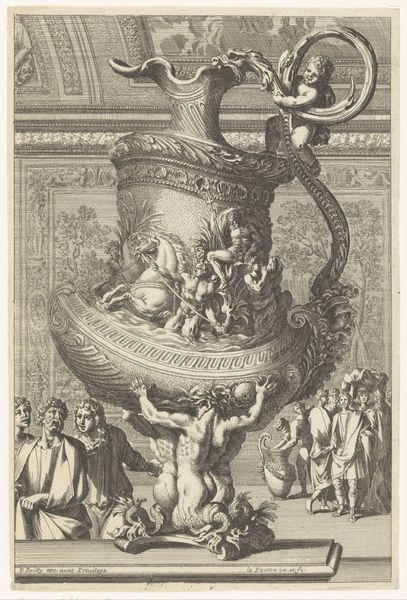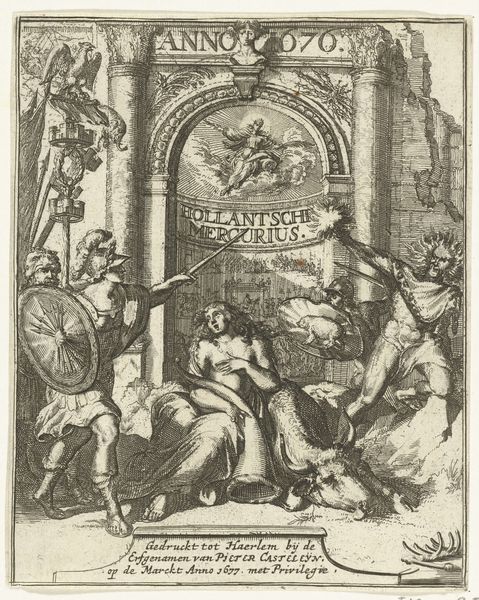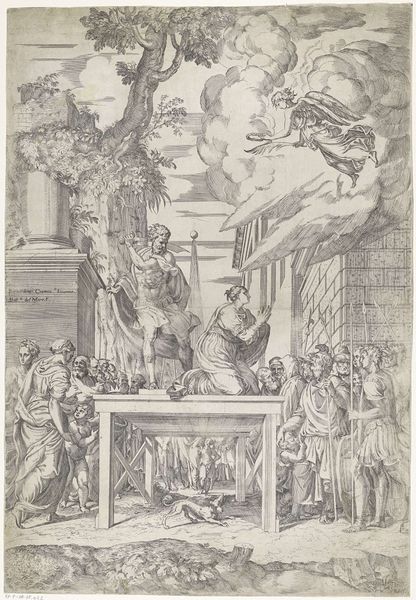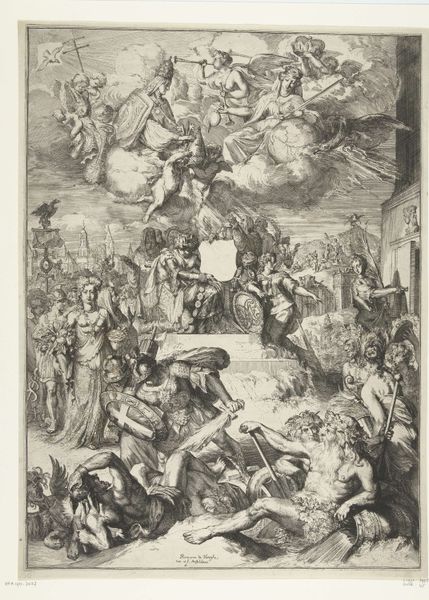
print, engraving
#
allegory
#
baroque
#
pen drawing
# print
#
figuration
#
cityscape
#
history-painting
#
engraving
Dimensions: height 171 mm, width 130 mm
Copyright: Rijks Museum: Open Domain
Curator: This engraving, serving as the title page for the “Hollandsche Mercurius” of 1687, was created by Romeyn de Hooghe in 1688. Editor: It's striking how much is crammed into this relatively small print. It feels dense, almost chaotic, with figures layered upon each other. Curator: Indeed, the composition reflects a distinct baroque sensibility, wouldn't you say? The eye is immediately drawn to the allegorical figures above – Pallas Athena standing triumphantly. Observe the exquisite details in her drapery, the rendering of light and shadow which defines her presence. Editor: Of course, one can’t ignore how those figures, though classically rendered, serve a very specific political function. Athena bestowing a crown certainly speaks to power and legitimization. Is there perhaps an intent to idealize and validate existing power structures through the guise of historical allegory? Curator: The upper register utilizes classical symbolism. The lower part seems to depict more contemporary turmoil and human drama, though. It certainly contributes to the print's dynamic energy. Note how the artist uses hatching to define form. It serves both descriptive and expressive purposes. Editor: What strikes me is how the depiction of contemporary subjects often overlooks historical oppressions and injustices. These representations of conflict frequently reinforce the narratives of the victors, silencing marginalized voices within those struggles. Curator: From a formal point of view, the use of contrasting visual registers within a single frame does achieve a visually striking composition, and it enhances the reading of the narrative, which wouldn’t be the same if the scenes were compartmentalized, for instance. Editor: Yes, but the artist must always reckon with the power of their artistic choices to reflect—or indeed, refract—the social realities from which they are derived. This kind of historical contextualization forces us to examine what histories get remembered, and how. Curator: Perhaps through these divergent interpretations, we can gain a fuller sense of the intricate visual construction Romeyn de Hooghe has offered. Editor: Agreed. And a broader sense of how artworks, regardless of medium, interact within complex socio-historical dialogues.
Comments
No comments
Be the first to comment and join the conversation on the ultimate creative platform.
